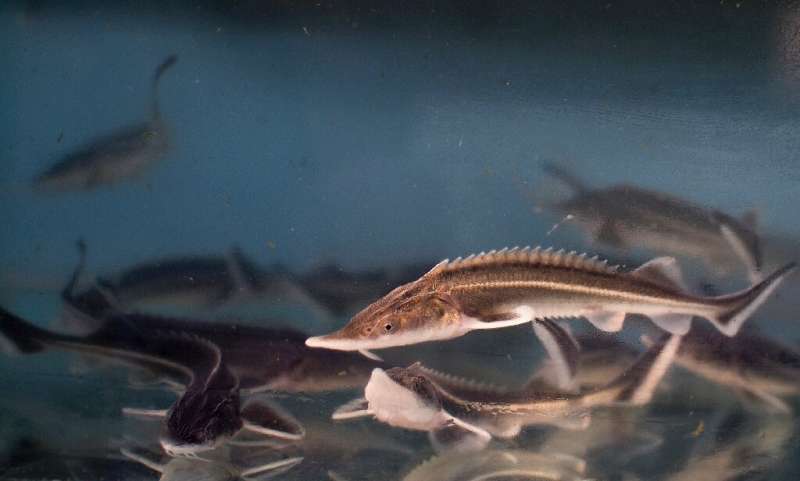River fish like sturgeon, pictured here, are threatened by disruptions to their migration routes as well as overfishing
Populations of migratory river fish collapsed by 76 percent on average in the last 50 years, according to a report by conservation groups Tuesday, warning the "catastrophic" declines could impact people and ecosystems around the world.
Overfishing and loss of habitat have had a devastating impact on migratory fish, according to the research by groups including the International Union for the Conservation of Nature, WWF, World Fish Migration Foundation and the Zoological Society of London.
Almost one in three of all freshwater species are threatened with extinction, the report said, with migratory fish "disproportionately threatened".
The study looked at 247 species of fish from around the world and found that their populations had declined on average 3 percent per year between 1970 and 2016.
Europe saw the sharpest falls of the regions studied, with a drop of 93 percent, while populations had shrunk an average of 84 percent in Latin America and the Caribbean.
"Catastrophic losses in migratory fish populations show we cannot continue destroying our rivers," said Arjan Berkhuysen, managing director of the World Fish Migration Foundation.
"This will have immense consequences for people and nature across the globe. We can and need to act now before these keystone species are lost for good."
Dams hamper fish migration
Migratory fish such as salmon, trout and Amazonian catfish support the livelihoods of millions of people around the world, researchers said.
The study found a lower decline of 28 percent in North America, where there has been a movement to remove dams and protect habitats, and argued that this indicated the potential effectiveness of fishery management.
Large fish such as the beluga, a sturgeon, or the giant Mekong catfish, are particularly vulnerable, it said, adding that dams and other obstacles blocked migrations that are crucial to their life cycles.
"Habitat degradation, alteration, and loss accounted for around a half of threats to migratory fish, while over-exploitation accounted for around one third," the report said.
The main threats to fish species in Europe were dams and other waterway blockages, counting 1.2 million obstacles across the continent, said the report.
But it said that the tide was turning, with a European Union plan to restore 25,000 kilometers of free-flowing rivers by 2030.
The report stressed that it could not provide a full global picture because of a lack of data for Africa, Asia, Oceania and South America.
© 2020 AFP























